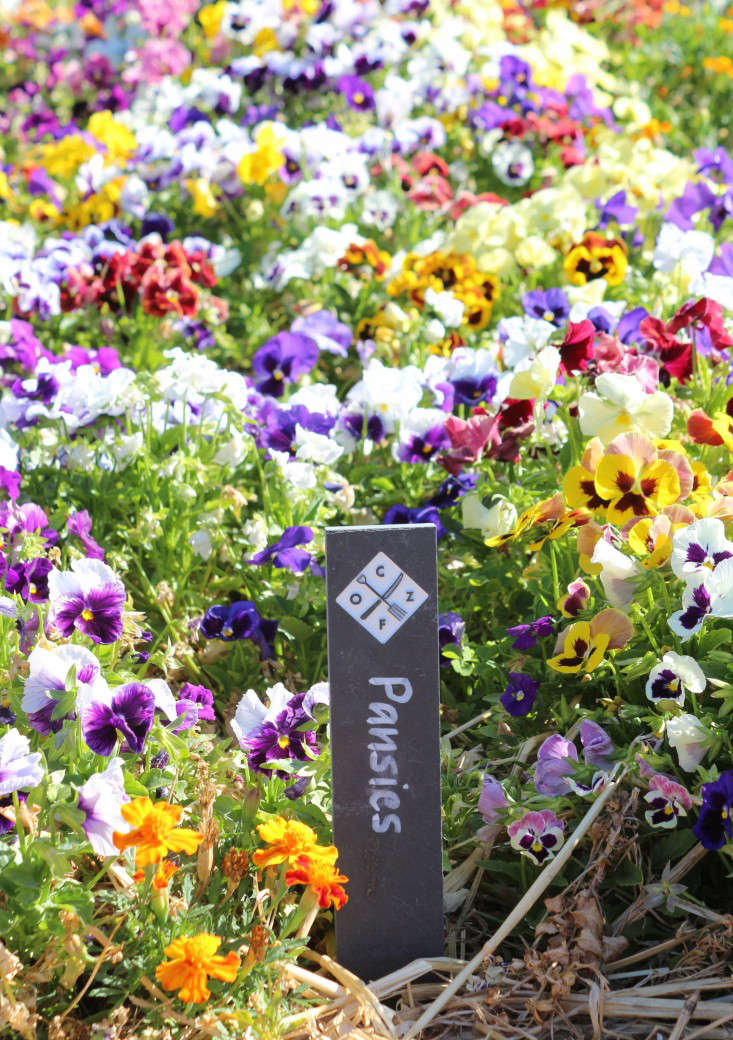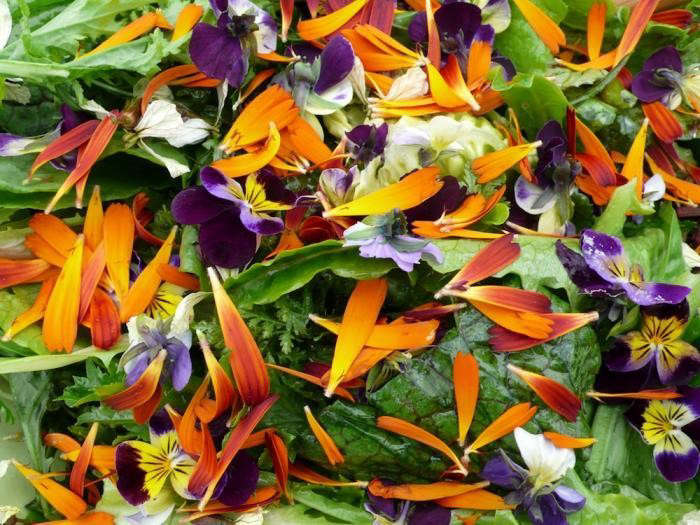A pansy can go from seed to flower in nine weeks, which tells you something about its eagerness to please.
Viola x wittrockiana is not a complainer. Every spring, we notice cheery clumps of pansies that have shown the initiative to sow themselves in the unlikeliest spots: in sidewalk cracks, alongside curbs, or tucked into the edge of flower beds otherwise reserved for something grander. Here are a few of our favorite sightings.
Above: Photograph by Marie Viljoen.
Pansies are one of the few flowers that seem equally happy to be described as perennials, annuals, and biennials. It wouldn’t surprise anyone to see a new clump pop up, next spring, in a crack on the stairs.
Above: Growing at the base of purple kale stalks, pansies are a cheerful ground cover. Photograph by Jonathan Buckley.
There are at least 500 varieties of pansy hybrids, many of which descend from the yellow Viola lutea.
Above: Pansies are edible—and delicious when mixed with nasturtiums in a salad. Photograph by Kendra Wilson.
The other parent of many modern varieties is Viola altaica (shown above). For pansies like those grown in the 19th century, try the Historic Pansies Mix, $2.99 for a packet of 50 seeds from Seed Savers Exchange.














Have a Question or Comment About This Post?
Join the conversation (0)